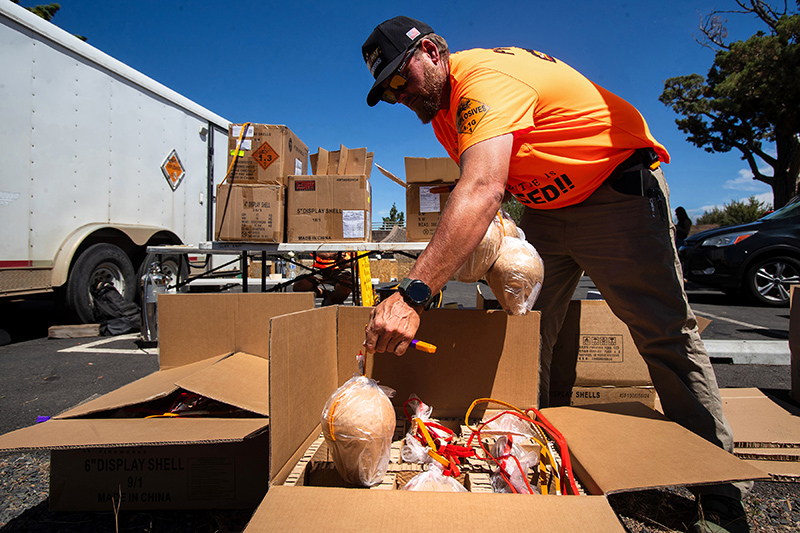New rule on tackling has ups and downs
Published 12:00 am Tuesday, September 11, 2018
Welcome, pro football fans, to a new NFL.
Sunday, the first full day of games in the 2018 season, brought surprises: Some of the most routine tackles, for example, are now penalties.
There were improvements: A reckless hit brought an immediate ejection.
And there was confusion: A new rule designed to curb the dangerous use of a player’s helmet was applied irregularly and did not prevent a scary injury.
It was only one day. It will probably get better, and you will likely get used to it.
You will also have no choice, because the NFL is not turning back.
The new rules that went into effect in this season’s opening week are the first of perhaps many steps as the NFL desperately tries to moderate the most hazardous collisions in an intentionally violent sport.
In five years, what might have raised eyebrows Sunday will instead be viewed as customary.
Sunday, fans got their first regular-season look at the most talked-about new rule in a decade, which makes it a 15-yard penalty for a player to initiate contact with an opponent by lowering his head. It is an effort to outlaw using the helmet as a weapon. Most notably, as the league repeated for weeks, the rule would apply to any player, including a running back or wide receiver, lowering his head to ward off a tackler or to gain a few extra yards.
But in New England’s game with Houston, Patriots wide receiver Cordarrelle Patterson caught a pass and turned up the field, where he was met by Texans cornerback Kevin Johnson. Patterson lowered his helmet and delivered a direct blow to Johnson’s helmet.
The impact caused Johnson’s shoulders to slump and his legs went limp as he crumbled to the turf like a boxer absorbing a knockout blow. Johnson was later determined to have a concussion, his second in recent weeks. Three days before Sunday’s game, Johnson was medically cleared to play after a concussion in the preseason.
It seemed to be a textbook example of the kind of hit the new rule was meant to penalize — Johnson appeared to be positioning himself for a shoulder-first tackle until Patterson lowered his head and struck him with his helmet.
No penalty was called.
But throughout the league there were several penalties called on defensive players for helmet-to-helmet contact. Since the NFL had rules in place before this season prohibiting hits to the head, each penalty may not have technically been a result of the new helmet-use rule, but it surely appeared they were related.
Watching game after game Sunday, it seemed quite clear that the officials had gotten the message from league headquarters that there was to be little tolerance for hits to the head, however they occurred.
So, if all the preseason talk about players not being allowed to lower their heads yielded a definitive statement like Williams’ ejection, then that is a good thing.
Which may have been the NFL’s intent.
In a telephone interview last week, Dean Blandino, a Fox Sports rules analyst who until last year oversaw officiating for the NFL, said the new helmet rule was “all part of a culture change” within the league.
“I think the NFL wanted to take a stance,” Blandino said.
There is another stance the league is taking. It wants to remind every NFL player that quarterbacks are more important than all the other players on the field. And the NFL is going to use penalty flags to continue to make that point.
This season, one of the little-recognized changes in the rules was what the NFL calls a “point of emphasis.” These are directives from the league to game officials about existing rules that it wants them to enforce more stringently.
Among the rules designed specifically to protect the quarterback, there is a clause about defenders not using all, or part, of their body weight to land on the quarterback if he is tackled as he is throwing the football or just after he has thrown a pass.
The exact wording of the point of emphasis was a reminder that “the defender is responsible for avoiding landing on the quarterback when taking him to the ground.”
It may be a good rule, especially considering that Green Bay quarterback Aaron Rodgers, who missed nine games with a broken collarbone last season, was injured again by a hit in the pocket Sunday night (Rodgers returned and led the Packers to victory over the Chicago Bears). But it is asking a lot of defensive linemen. Most 300-pound men running at top speed and about to make a tackle are not as nimble as contortionists as they topple to the ground afterward.
But because of the new point of emphasis, Myles Garrett of the Cleveland Browns was penalized Sunday for falling on top of Pittsburgh’s Ben Roethlisberger as he tackled him. Same thing happened to Minnesota’s Sheldon Richardson because he could not avoid a prone Jimmy Garoppolo a millisecond after shoving the San Francisco QB to the ground. Cincinnati’s Carlos Dunlap received the same punishment after he sacked Luck, caused a fumble and did an athletic little flip forward to get off Luck as he hit on the ground.
But Dunlap did sack Luck again two plays later by flinging him to the ground. No penalty, and the Bengals eventually won the game.
Welcome to a new NFL.








